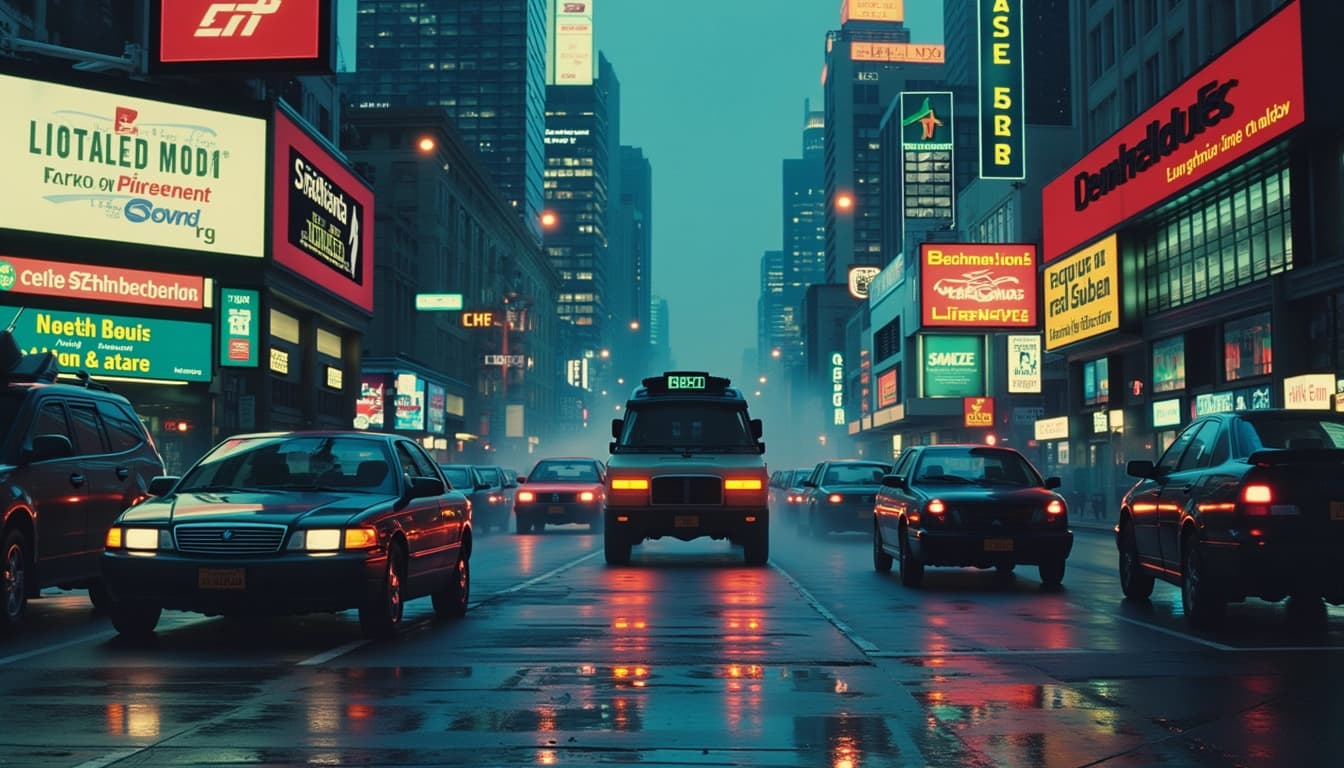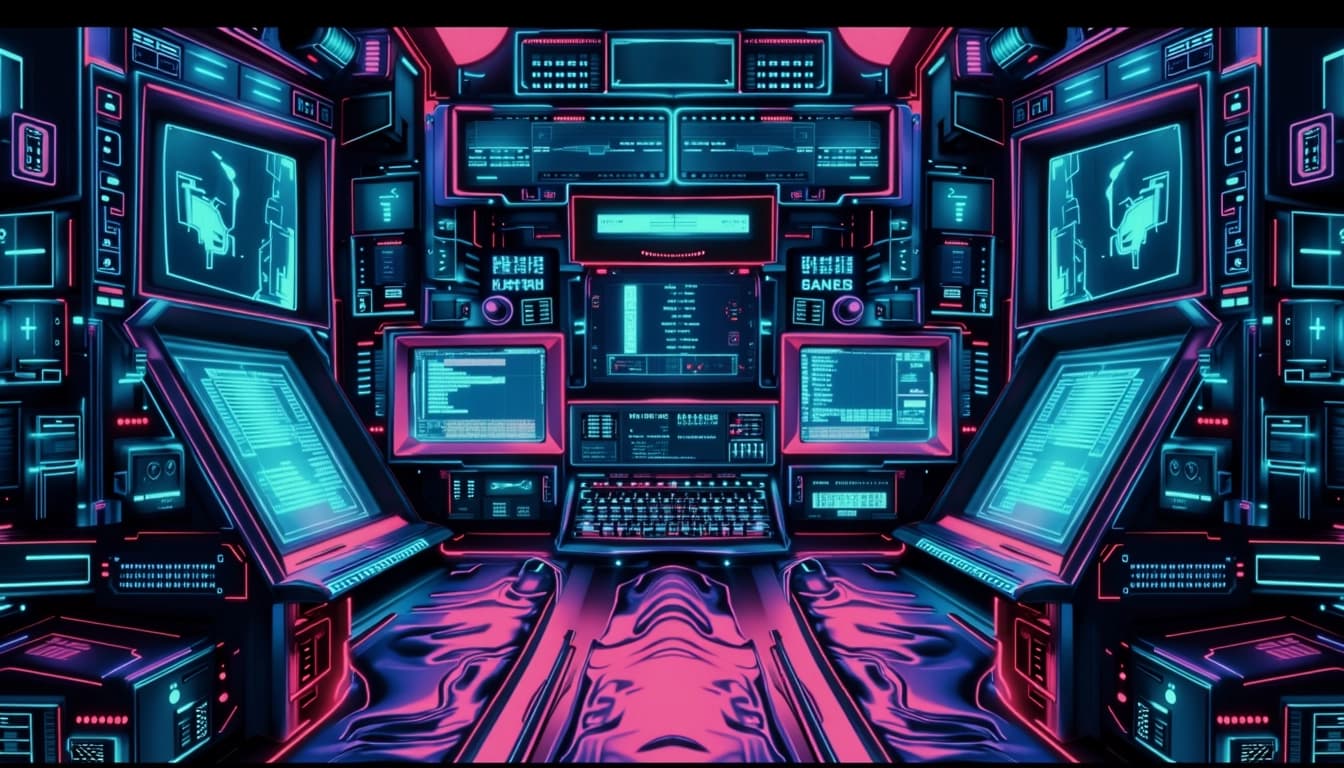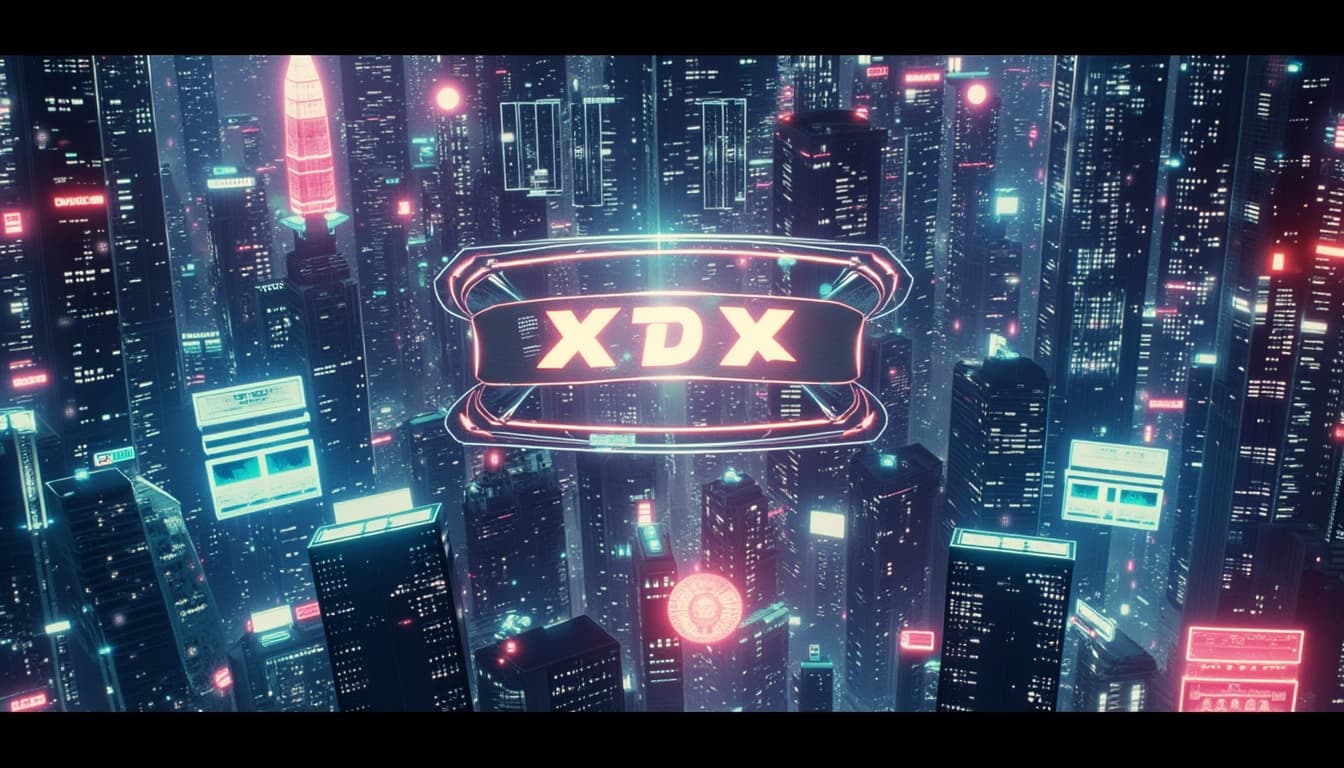
Stable Diffusion XL (SDXL): A Guide to Creating Niche Markets with AI-Generated Art
By John Doe 5 min
Key Points
SDXL, developed by Stability AI, is a text-to-image AI model that generates high-quality images from prompts, likely improving on previous models with better detail and composition.
It seems likely that users can create niche markets by generating unique images for specific audiences, such as fantasy art or pet portraits, and selling them as stock photos, NFTs, or custom services.
Research suggests that success depends on identifying underserved markets, crafting effective prompts, and building a strong brand, though legal and ethical issues around AI art, like copyright, may pose challenges.
What is Stable Diffusion XL (SDXL)?
Stable Diffusion XL, or SDXL, is a text-to-image generative AI model developed by Stability AI. It’s an advanced version of the popular Stable Diffusion model, designed to create high-quality images from textual descriptions. Released in 2023, SDXL is known for improved image quality, better understanding of shorter prompts, and enhanced composition, making it suitable for artists, designers, and entrepreneurs.
How Can You Use SDXL?
You can access SDXL through platforms like Clipdrop ([Clipdrop](https://clipdrop.co/stable-diffusion)) for web-based use, or run it locally with a GPU using libraries like diffusers from Hugging Face ([Hugging Face](https://huggingface.co/stabilityai/stable-diffusion-xl-base-1.0)). For local use, you’ll need Python and specific libraries, and can generate images with simple code, like prompting “An astronaut riding a green horse.” Combining the base and refiner models can enhance detail, ideal for professional outputs.
Creating a Niche Market with SDXL
To build a niche market, identify a specific demand, like fantasy art for games or pet portraits for owners. Develop a unique style through prompt engineering, build a portfolio, and choose a business model, such as selling images on stock platforms or offering custom services. Market your work on social media and engage with
Stable Diffusion XL (SDXL), developed by Stability AI, represents a significant advancement in text-to-image generative AI, offering enhanced capabilities for creating high-quality, detailed images from textual prompts. This survey note delves into SDXL’s features, usage, and strategies for leveraging it to establish niche markets, providing a comprehensive guide for users interested in exploring its commercial potential.
Understanding Stable Diffusion XL
SDXL is the successor to the widely used Stable Diffusion model, first released in 2023. It is designed to generate images with improved resolution, composition, and realism, making it a powerful tool for creative and commercial applications. The model excels in understanding shorter prompts, reducing the need for complex descriptions, and supports advanced features like in-painting and out-painting.
Key Features of SDXL
A key component is the optional refinement model, which adds finer details to outputs, enhancing quality for professional use. The model operates as a latent diffusion model, meaning it works in a compressed representation space to reduce computational requirements, allowing it to run on consumer-grade GPUs. This accessibility is a notable advantage, differentiating SDXL from cloud-only models.
Commercial Applications of SDXL
According to the official documentation, SDXL is intended for research purposes, with intended uses including artwork generation, design, educational tools, and generative model research. However, it is explicitly not for factual representations of people or events. The model's versatility opens up opportunities for niche market creation, such as custom artwork for small businesses or unique digital assets for online communities.

Legal and Ethical Considerations
Success in leveraging SDXL for niche markets likely hinges on quality, uniqueness, and addressing legal issues like copyright, given controversies around AI art training data. Users must ensure they comply with licensing agreements and respect intellectual property rights when generating and selling AI-created content.
Conclusion & Next Steps
Final thoughts and a summary of the key points of the blog post include the importance of understanding SDXL's capabilities, exploring its commercial potential, and navigating legal considerations. By focusing on niche markets and high-quality outputs, users can effectively harness the power of SDXL for creative and business applications.

- Explore SDXL's features and refinement options
- Identify niche markets for AI-generated content
- Ensure compliance with legal and ethical standards
Stable Diffusion XL (SDXL) 1.0 represents a significant advancement in AI-driven image generation, offering high-resolution outputs up to 1024x1024 pixels. Developed by Stability AI, this model builds upon previous versions with enhanced capabilities in photorealism and composition. It is designed to cater to both creative professionals and hobbyists, providing a robust tool for generating detailed and aesthetically pleasing images.
Key Features of SDXL 1.0
SDXL 1.0 introduces several improvements over its predecessors, including better handling of complex prompts and more realistic textures. The model supports a wide range of styles, from photorealistic portraits to abstract art. Additionally, it includes a refiner model that enhances fine details, making it ideal for professional-grade outputs. These features make SDXL 1.0 a versatile choice for various applications, from marketing to entertainment.
Enhanced Photorealism and Detail
One of the standout features of SDXL 1.0 is its ability to generate highly realistic images. The model excels at rendering intricate details such as facial expressions, textures, and lighting effects. This makes it particularly useful for industries like advertising and gaming, where visual fidelity is crucial. The refiner model further improves these aspects, ensuring that the final output meets professional standards.
Technical Specifications and Requirements
SDXL 1.0 requires a GPU for efficient processing, with recommendations for at least 16GB of VRAM for optimal performance. The model is compatible with Python and can be integrated into workflows using libraries like diffusers and transformers. Users can also access SDXL through web-based platforms like Clipdrop, which simplifies the process for those without technical expertise.

Potential Applications and Use Cases
The versatility of SDXL 1.0 opens up numerous possibilities across different sectors. In marketing, it can be used to create eye-catching visuals for campaigns. In education, it can generate illustrative content for textbooks. The entertainment industry can leverage it for concept art and storyboarding. These applications highlight the model's potential to revolutionize creative workflows.
Ethical Considerations and Limitations
While SDXL 1.0 offers impressive capabilities, it is not without limitations. The model may struggle with rendering legible text or highly complex compositions. Additionally, there are concerns about biases present in the training data, which could influence the generated images. Users should be mindful of these issues when deploying the model in sensitive contexts.
Conclusion and Future Developments
SDXL 1.0 marks a significant step forward in AI-generated imagery, combining high-quality outputs with user-friendly accessibility. As the technology continues to evolve, future versions may address current limitations, further expanding its utility. For now, SDXL 1.0 stands as a powerful tool for creatives looking to push the boundaries of digital art.

- High-resolution image generation up to 1024x1024 pixels
- Enhanced photorealism and detail with refiner model
- Wide range of applications across industries
- Ethical considerations and limitations to be aware of
Stable Diffusion XL (SDXL) represents a significant leap in AI-driven image generation, offering enhanced resolution and detail for creative professionals. This model builds on the success of its predecessors, incorporating advanced training techniques and larger datasets to produce more realistic and diverse outputs. Whether you're an artist, marketer, or hobbyist, SDXL provides powerful tools to bring your visions to life.
Getting Started with SDXL
To begin using SDXL, you'll need to set up the environment with the necessary libraries and dependencies. The process involves installing Python, PyTorch, and the Diffusers library from Hugging Face. Once installed, you can load the SDXL model and start generating images with simple prompts. The model supports both base and refiner versions, allowing for high-quality outputs with minimal effort.
Basic Image Generation
Generating images with SDXL is straightforward. By providing a text prompt, the model interprets your description and creates a corresponding image. For example, a prompt like 'a serene landscape with mountains and a lake at sunset' will yield a detailed and visually appealing result. The base model handles the initial generation, while the refiner enhances details and resolution for professional-grade outputs.
Advanced Techniques and Optimization
For those looking to maximize SDXL's capabilities, advanced techniques such as prompt engineering and optimization tips can significantly improve results. Prompt engineering involves crafting detailed and specific descriptions to guide the model more effectively. Optimization tips include using torch.compile for faster processing and enabling CPU offloading to manage VRAM usage efficiently.

Creating a Niche Market with SDXL
SDXL's versatility makes it ideal for carving out niche markets. By identifying underserved areas and tailoring outputs to meet specific demands, users can create unique offerings. Examples include fantasy art for tabletop games, custom pet portraits, or architectural visualizations. Market research and style development are key steps in establishing a successful niche business.
Conclusion & Next Steps
SDXL opens up a world of possibilities for creative professionals and entrepreneurs. With its advanced capabilities and ease of use, the model empowers users to produce high-quality images for various applications. By mastering prompt engineering and exploring niche markets, you can leverage SDXL to its full potential and stand out in a competitive landscape.

- Install Python, PyTorch, and Diffusers library
- Load the SDXL model and generate images
- Use prompt engineering for better results
- Explore niche markets for unique offerings
Stable Diffusion XL (SDXL) offers a powerful tool for generating high-quality images, making it an attractive option for entrepreneurs looking to monetize AI-generated art. The key to success lies in identifying a profitable niche, refining a unique style, and leveraging the right business models. This article explores practical strategies to turn SDXL into a sustainable income source.
Identifying a Profitable Niche
Choosing the right niche is crucial for standing out in the crowded AI art market. Researching trends on platforms like Etsy, Reddit, or ArtStation can reveal underserved areas. For example, fantasy art for tabletop games or architectural visualizations for real estate are niches with high demand. Focusing on a specific audience ensures targeted marketing and higher conversion rates.
Case Study: Fantasy Art for Gamers
A successful example is an artist who generates custom Dungeons & Dragons character portraits using SDXL. By offering unique, stylized designs, they attract RPG enthusiasts willing to pay premium prices for personalized artwork. This niche thrives due to its passionate community and the need for distinctive visuals in gaming.
Developing a Unique Style
Consistency in style helps build a recognizable brand. Experimenting with SDXL’s parameters to create a signature aesthetic—such as retro-futuristic landscapes or hyper-realistic animals—can differentiate your work. Tools like LoRAs or fine-tuning models further enhance uniqueness, making your art less generic and more appealing to buyers.

Business Models for Monetization
Several monetization strategies exist, each with pros and cons. Selling stock images on platforms like Shutterstock provides passive income but faces stiff competition. NFTs cater to collectors but require strong marketing. Custom commissions offer higher profits but demand client management. Subscriptions (e.g., Patreon) ensure recurring revenue by delivering exclusive content.
- Stock Photography: Low effort, scalable, but saturated.
- NFTs: High potential returns, niche audience.
- Custom Commissions: Premium pricing, direct client interaction.
- Subscriptions: Steady income, community building.
Marketing and Growth
Effective marketing involves showcasing work on social media, engaging with communities, and collaborating with influencers. Platforms like Instagram and Behance are ideal for visual artists. Participating in forums or Discord groups related to your niche fosters trust and drives traffic. Regularly updating your portfolio with fresh, high-quality images keeps audiences engaged.
Conclusion & Next Steps
Monetizing SDXL requires a blend of creativity, strategic niche selection, and business acumen. Start by testing small-scale ideas, gather feedback, and scale successful ventures. Staying adaptable to AI advancements and market trends ensures long-term success in this dynamic field.

Stable Diffusion XL (SDXL) represents a significant advancement in AI-driven image generation, offering enhanced capabilities for creating high-quality visuals. This model builds upon the success of previous versions, providing users with more detailed and realistic outputs. Its applications span various industries, from marketing to entertainment, making it a versatile tool for creative professionals.
Key Features of SDXL
SDXL introduces several improvements over its predecessors, including higher resolution outputs and better handling of complex prompts. The model supports advanced features like image-to-image translation and inpainting, allowing for more refined edits. Additionally, its open-source nature enables developers to customize and integrate it into their workflows seamlessly.
Enhanced Resolution and Detail
One of the standout features of SDXL is its ability to generate images at higher resolutions with finer details. This makes it particularly useful for professional applications where quality is paramount. The model's improved architecture ensures that even intricate elements are rendered accurately, reducing the need for post-processing.
Commercial Applications
Businesses can leverage SDXL for a variety of purposes, such as creating marketing materials, product visuals, and even educational content. The model's efficiency and cost-effectiveness make it an attractive option for startups and established companies alike. By automating parts of the creative process, SDXL can significantly reduce production time and costs.
Legal and Ethical Considerations
While SDXL offers numerous benefits, it also raises important legal and ethical questions. Users must be cautious about copyright infringement, as the model's training data may include copyrighted material. Additionally, ethical guidelines should be followed to prevent the generation of harmful or misleading content. Understanding these considerations is crucial for responsible use.
Conclusion & Next Steps
SDXL is a powerful tool that opens up new possibilities for creative and commercial applications. However, its use comes with responsibilities, including adherence to legal and ethical standards. As the technology evolves, staying informed about updates and best practices will be essential for maximizing its potential while minimizing risks.

- Explore SDXL's features through hands-on experimentation
- Stay updated on legal developments related to AI-generated content
- Engage with the community to share insights and best practices
Stable Diffusion XL (SDXL) is a powerful open-source text-to-image model developed by Stability AI. It allows users to generate high-quality images from textual prompts, offering a wide range of creative possibilities. The model is particularly known for its ability to produce detailed and realistic images, making it a popular choice among artists and developers.
Getting Started with SDXL
To begin using SDXL, users can access it through various platforms such as Clipdrop or by installing it locally. Clipdrop provides a user-friendly web interface, while local installation requires setting up Python and necessary libraries. The model can be run on GPUs for optimal performance, and there are options to offload computations to the CPU if VRAM is limited.
Installation Requirements
For local installation, users need a compatible GPU with sufficient VRAM, Python, and libraries like PyTorch and Transformers. Detailed installation instructions are available on the Hugging Face model hub. It's important to ensure that all dependencies are correctly installed to avoid runtime errors.
Generating Images with SDXL
Once set up, users can generate images by providing textual prompts. The model interprets these prompts and creates corresponding images, which can be further refined using additional parameters. For example, adjusting the seed value or the number of inference steps can lead to different results.

Monetization Opportunities
SDXL offers several monetization avenues, including selling generated artwork, offering customization services, or developing niche applications. Artists can leverage the model to create unique pieces for sale, while developers can build specialized tools for specific industries. The open-source nature of SDXL also allows for commercial use with proper licensing.
Challenges in Monetization
Despite its potential, monetizing SDXL comes with challenges such as competition from other AI models and the need to differentiate offerings. Building trust with customers is also crucial, as some may question the authenticity of AI-generated art. Effective branding and customer engagement strategies can help address these issues.
Optimization and Future Updates
Users can optimize SDXL's performance by leveraging features like torch.compile for faster processing and CPU offloading for better VRAM management. Future updates from Stability AI are expected to enhance the model's capabilities, potentially opening new opportunities for innovation and application.

Conclusion & Next Steps
SDXL is a versatile tool for generating high-quality images from text, with numerous applications in art, design, and development. By understanding its features and exploring monetization strategies, users can fully harness its potential. Staying updated with the latest developments and community contributions will be key to maximizing its benefits.
- Explore SDXL on Clipdrop for easy access
- Install locally for full customization
- Consider niche markets for monetization
- Stay informed about future updates
Stable Diffusion XL (SDXL) is an advanced AI model developed by Stability AI, designed for high-quality image generation. It builds upon the success of previous Stable Diffusion models, offering enhanced capabilities for creating detailed and realistic images. The model is particularly suited for artists, designers, and businesses looking to leverage AI for creative and commercial purposes.
Key Features of Stable Diffusion XL
SDXL 1.0 introduces several improvements over its predecessors, including higher resolution outputs and better handling of complex prompts. The model supports a wide range of styles, from photorealistic images to abstract art. Additionally, SDXL Turbo offers real-time text-to-image generation, making it ideal for applications requiring quick turnaround times.
Enhanced Resolution and Detail
One of the standout features of SDXL is its ability to generate images with exceptional detail and clarity. The model can produce outputs at resolutions up to 1024x1024 pixels, ensuring that even fine details are captured accurately. This makes it a powerful tool for professional-grade artwork and design projects.
Applications of Stable Diffusion XL
SDXL can be used in various industries, including entertainment, education, and marketing. For example, game developers can use it to create concept art, while educators can generate illustrations for teaching materials. The model's versatility makes it a valuable asset for anyone looking to incorporate AI-generated visuals into their work.
Niche Market Creation
Entrepreneurs can leverage SDXL to create niche markets by offering specialized AI-generated content. For instance, generating unique fantasy art or custom illustrations for books can attract specific audiences. The key is to identify unmet demands and tailor the AI's output to meet those needs.
Prompt Engineering for Optimal Results
To get the best results from SDXL, users need to master prompt engineering. This involves crafting detailed and specific prompts that guide the AI to produce the desired output. Experimenting with different styles, settings, and parameters can help refine the results and achieve higher quality images.
Legal and Ethical Considerations
Using AI-generated images comes with legal and ethical responsibilities. It's important to ensure that the content does not infringe on copyrights or propagate harmful stereotypes. Users should also be transparent about the use of AI in their creations to maintain trust with their audience.
Conclusion & Next Steps

Stable Diffusion XL represents a significant leap forward in AI-powered image generation. Its advanced features and versatility open up numerous opportunities for creative and commercial applications. By understanding its capabilities and limitations, users can harness its potential to innovate and create unique visual content.
- Explore SDXL's features through hands-on experimentation.
- Identify niche markets that can benefit from AI-generated content.
- Stay updated on legal and ethical guidelines for AI usage.